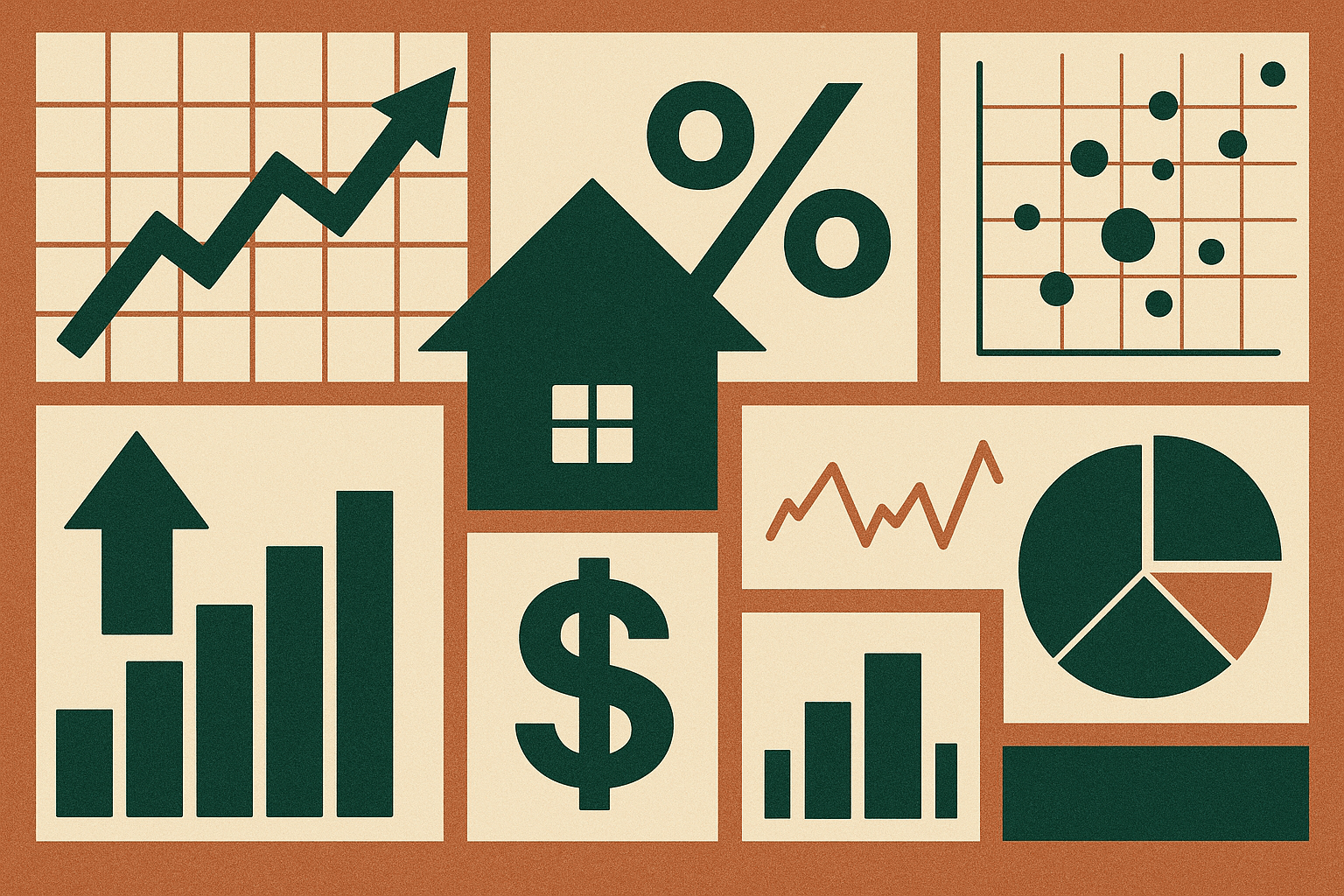Invest
20% housing downturn unlikely, but spooked investors could upset markets
Invest
20% housing downturn unlikely, but spooked investors could upset markets
The drop in the housing market is unlikely to reach 20 per cent, however spooked investors could prolong the length of the downturn.
20% housing downturn unlikely, but spooked investors could upset markets
The drop in the housing market is unlikely to reach 20 per cent, however spooked investors could prolong the length of the downturn.

Speaking at a luncheon this week, Robert Mellor, managing director of BIS Economics, says median house prices are unlikely to drop lower than 15 per cent in Sydney and Melbourne, with a fall beyond that degree unprecedented.
“In terms of house prices, if we say prices are down by about 8 per cent in Sydney to date, worse-case scenario we’re saying probably another 4 [per cent]. We could say it was 6 or 7, but you’re not really going above 15.”
“This is a relatively large correction. [But] 12 per cent would be our forecast, from the peak of June last year.”
“The biggest price declines of 10 to 15 per cent in the past have always been at the upper end of the market. Median prices have rarely come down more than 10 per cent.”

Investor sentiment flagged as the biggest threat
He says the biggest threat, however, comes from the impact of such drops on investor sentiment. With prospective buyers spooked out of the market, he says, the current downturn could be prolonged.
“If you start talking about annualised figures of 7 or 8 per cent, someone sitting there and making a decision, as an investor or even as an owner-occupier, you’d sit on your hands because there is the feeling of, ‘Well, how much further is this going to fall?’”
Fundamentals are still strong
Mr Mellor highlighted that although the fundamentals in Sydney and Melbourne have not reached oversupply, and demand is predicted to continue, it is the scope of negative investor sentiment that will see key market indicators such as land prices continue to fall.
“You sort of think, Sydney or Melbourne shouldn’t be that bad because the fundamentals of oversupply are not there. Neither of those markets are going to end up in oversupply – maybe pockets of apartments but not generally – and the correction is underway from construction,” he said.
“I think given the magnitude of the downturn in investor demand across the board, you’ll see an impact on detached housing and the sale of land.”
He predicted land prices in some areas of the two capital cities could be down 30 to 40 per cent.
He says that despite his belief that the housing market should improve in both detached housing and land sales by 2021, as the underlying demand from overseas immigration continues to strengthen, investor sentiment will still be a significant headwind.
“I think the big issue will be sentiment still being negative in the investor market in 2021.”
Investors negative sentiment well-founded
He says this negative perception is not unfounded, as investors have been facing increasing housing unaffordability and significant regulatory changes.
“I think the price movements were just so phenomenal. Melbourne is a classic example of where, last year, land prices went up by – I think, the figure is 30 per cent plus in a year. That’s just crazy sort of stuff – but, effectively, you get to a point where people can’t afford it.”
Mr Mellor cites Brisbane’s detached housing market as an example of where the fundamentals of oversupply are not a threat, but the investor interest has been curbed by the increased regulatory environment spurred by APRA and the royal commission.
Labor's negative gearing and CGT further headwinds
In light of this, he pinpoints Labor’s proposed changes to negative gearing and the capital gains tax (CGT) as potentially further exacerbating the problem, as investors are already lacking incentives to enter the market.
“The big issue will be investors are not going to return to this market quickly, and that’s before they know that there’s any definite change of policy on negative gearing,” he said.
“The market needs new people in the market, and even though the Labor policy is allowing the continued allowance on negative gearing on new dwellings, the reality is 70 per cent of investors are buying established property, at least.”
“If you haven’t got the dynamics of the market working for established property, the demand for new dwellings won’t happen.
“There’s no point getting a few new investors out there buying off the plan. If the overall sentiment towards the market is negative, the developer won’t get his project off the ground.”
“I think that’s the environment that’s going to be operating still in two years time, and it’s going to take some time into 2021 before that sentiment changes.”
Investors imperative to market improvement
Frank Gelber, chief economist at BIS Economics, agreed, highlighting the risk of increased regulation, as investor sentiment is fundamental in driving median house prices, which greatly impacts the rise and fall of the market.
“The structural difference is that now investors won’t come back,” he said.
“Last downturn in Sydney took nine years, and we were sitting there saying, ‘The market is undersupplied. We need to build more, but prices are below development costs.’
“You couldn’t build anything until we saw price rises, and it was Chinese investors that drove that upswing, and then we all joined in.”
“Now, until median house prices moved, there was no way the market was going to take off.”

Property
Hidden cost, higher prices: Why a council fee fight matters for Australia’s housing pipeline
A dispute between the Housing Industry Association and Goulburn Mulwaree Council over development cost estimates is more than a local skirmish—it spotlights a systemic pricing lever that can compound ...Read more

Property
Why Aussie homes are turning into stepping stones for the new generation
A new cohort of buyers is treating their first property as a launchpad, not a destination—and the mortgage industry is pivoting in lockstep. Read more

Property
Rate cuts ignite an upsizing wave: how to win the next phase of Australia’s housing cycle
Cheaper money is reviving borrowing capacity and confidence, and upsizers are back in force — most visibly at auctions where clearance rates have lifted to yearly highs. The ripple effects extend ...Read more

Property
Rate anxiety fades, affordability bites: What Australia’s property market shift means for business
Australian buyers are no longer driven primarily by interest rate fears; the binding constraint is affordability. New research shows price pressure, not policy moves, is shaping behaviour—forcing ...Read more

Property
South Australia's first-home buyer boom fuels a frenzy for lenders, builders and retailers
South Australia has quietly become the nation’s most active first‑home buyer market, fuelled by falling rates, generous state incentives and a responsive broker ecosystem. Read more

Property
Melbourne’s turning point: the 2025 playbook for investors—and the 2026 upside
After lagging other capitals, Melbourne is quietly moving off the floor. Prices have logged several consecutive months of growth, rental markets remain tight, and forecasts point to a sharper upswing ...Read more

Property
Brisbane hits the million-dollar mark as growth takes a detour and investors eye new opportunities
Brisbane has crossed the symbolic $1 million median for houses, but the more investable momentum is in units—and the growth curve is flattening. Read more

Property
North platform adds household reporting feature to boost adviser efficiency
AMP's North platform has launched consolidated household reporting across multiple client accounts, helping financial advisers streamline their client review processes. Read more

Property
Hidden cost, higher prices: Why a council fee fight matters for Australia’s housing pipeline
A dispute between the Housing Industry Association and Goulburn Mulwaree Council over development cost estimates is more than a local skirmish—it spotlights a systemic pricing lever that can compound ...Read more

Property
Why Aussie homes are turning into stepping stones for the new generation
A new cohort of buyers is treating their first property as a launchpad, not a destination—and the mortgage industry is pivoting in lockstep. Read more

Property
Rate cuts ignite an upsizing wave: how to win the next phase of Australia’s housing cycle
Cheaper money is reviving borrowing capacity and confidence, and upsizers are back in force — most visibly at auctions where clearance rates have lifted to yearly highs. The ripple effects extend ...Read more

Property
Rate anxiety fades, affordability bites: What Australia’s property market shift means for business
Australian buyers are no longer driven primarily by interest rate fears; the binding constraint is affordability. New research shows price pressure, not policy moves, is shaping behaviour—forcing ...Read more

Property
South Australia's first-home buyer boom fuels a frenzy for lenders, builders and retailers
South Australia has quietly become the nation’s most active first‑home buyer market, fuelled by falling rates, generous state incentives and a responsive broker ecosystem. Read more

Property
Melbourne’s turning point: the 2025 playbook for investors—and the 2026 upside
After lagging other capitals, Melbourne is quietly moving off the floor. Prices have logged several consecutive months of growth, rental markets remain tight, and forecasts point to a sharper upswing ...Read more

Property
Brisbane hits the million-dollar mark as growth takes a detour and investors eye new opportunities
Brisbane has crossed the symbolic $1 million median for houses, but the more investable momentum is in units—and the growth curve is flattening. Read more

Property
North platform adds household reporting feature to boost adviser efficiency
AMP's North platform has launched consolidated household reporting across multiple client accounts, helping financial advisers streamline their client review processes. Read more








